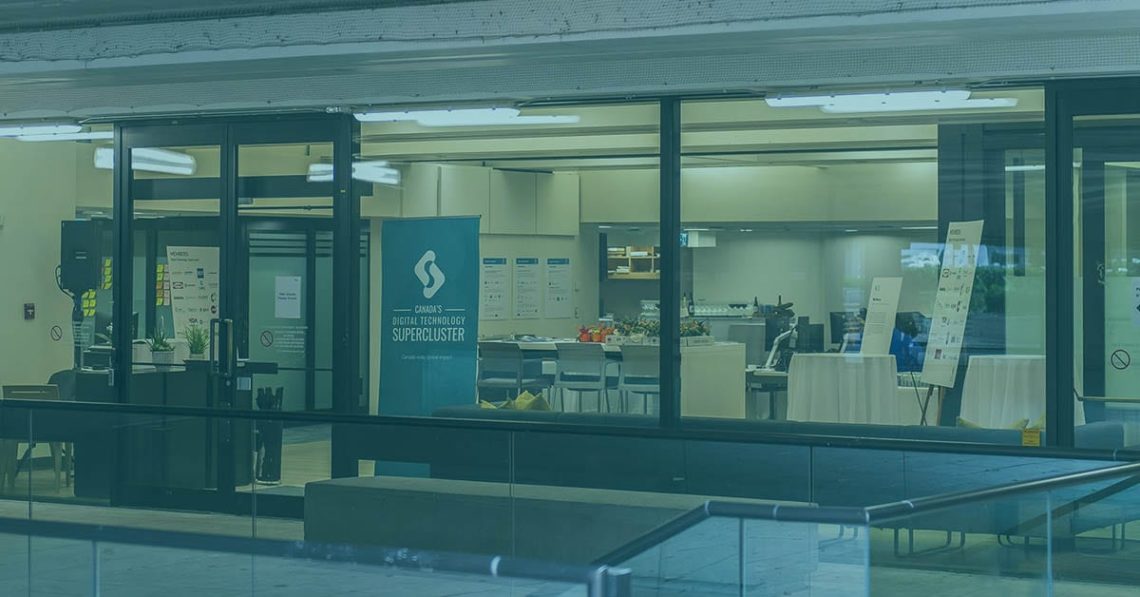April 3, 2020 – The Digital Technology Supercluster is pleased to introduce two new ways we are responding to our members’ needs. Being sensitive to the current environment, we will not be charging project fees for the period April 2020 to March 2021. In addition, we are introducing a new and simplified Membership fee structure because of feedback from our members as well as to accelerate and expand our innovation community while continuing to maintain our core principles.
Over the last two years, with the incredible support of our original 29 members, we have been able to fund commitments of nearly 30 projects involving over 100 organizations, operate our Supercluster and expand our ecosystem building efforts – all critical components to our collective success. We are now in a strong position to offer a Membership fee structure that will reduce barriers to participate in projects, grow our innovation community while maintaining the core founding principles.
Below we provide more detail on:
1. Waiving project fees for the period of April 2020 to March 2021;
2. The new Membership fee structure; and
3. The transition plan from the existing membership fee structure to the new fee structure.
Waiving Project Fees for 2020-2021
Given the current environment, we are providing support to our members by waiving project fees and therefore increasing the amount of net investment paid to Members. As outlined below, under the new fee structure, there are two components, a project fee based on claims and a lower annual Membership fee. Project fees will be waived based on claims made in the period April 2020 to March 2021.
The New Membership Fee Structure
The existing Membership model has 4 levels of membership with varying annual investment commitments and corresponding upfront program management fees. The new Membership fee structure retains the 4 levels of membership but better matches fees with investment funds received. There is a significantly smaller up-front annual membership fee, not tied to investments, along with a project fee payable when funding is received by Members. It is this project fee that is being waived for the period of April 2020 to March 2021. There is no change in the co-investment amount or the cost of being a member but the timing of the costs and benefits is aligned. The new fee structure retains a key founding principle, having “skin-in-the-game”, while matching the timing project fees paid with funding received.
The changes to the fee structure are shown in the table below. The example provided is for Regular Members.
| Regular Membership | New | Old |
| Annual Investment | No annual investment commitment | $200,000 annual Investment commitment |
| Project Fee | Pay as you receive funding 10% of Project Cost | Paid Annually Up Front $30,000 |
| Upfront Fee | $5,000 | $30,000 (as noted above) |
Transition Process
The new model will be effective on April 1, 2020. Existing Members will have a choice to move to the new membership fee structure or to maintain the existing structure. Details on the different Membership models and the implied fee structure for existing members can be found here.
In the next month, we will consult with all existing Members to determine their preferred model and amend the related Membership agreement schedule accordingly.
If you are new to the Supercluster or membership and would like to become an Associate or Member, we invite you to join here.
Questions?
If you have questions about Supercluster Membership or are interested in joining, please contact info@digitalsupercluster.ca.
About Digital Technology Supercluster:
The Digital Technology Supercluster is led by global companies such as MDA, Microsoft, Telus, Teck Resources Limited, Mosaic Forest Management, LifeLabs and Terramera, and tech industry leaders such as D-Wave Systems, Finger Food Advanced Technology Group, and LlamaZOO. Members also include BC’s post-secondary institutions such as Emily Carr University of Art + Design, British Columbia Institute of Technology, University of British Columbia and Simon Fraser University. A full list of Members can be found here.
